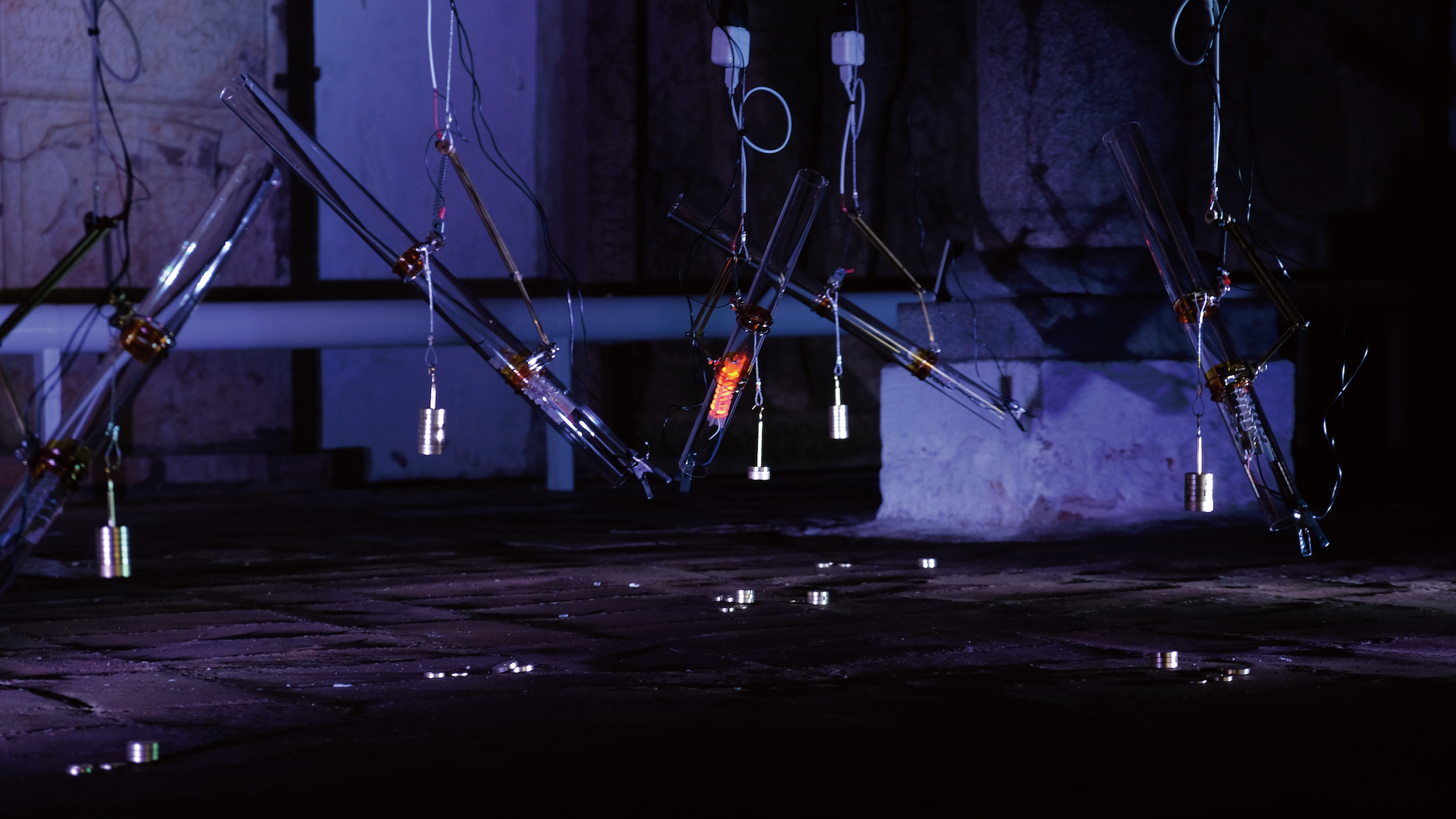23rd Art Division Excellence Award
Soundform No.1
Media installation
Natura Machina (KAKEHI Yasuaki / Mikhail MANSION / WU Kuan-Ju) [Japan / United States / Taiwan]
Outline
An installation piece with kinetic devices that employs sounds that are generated when heat energy is converted to acoustic energy. Titanium-nickel shape memory alloy springs that are inserted into multiple glass tubes suspended in the exhibition space are heated electrothermally. Beyond a certain temperature, the springs inside glow and change form. This causes the glass tubes to tilt at different angles, which in turn affects the flow of air as well. As the air itself vibrates from the heat, a sound-producing thermoacoustic phenomenon occurs, causing distinctive tones to be played. Factors such as the flow of air, the temperature and the orientation of the glass tubes all influence the conversion of heat to sound. Accordingly, a wide range of sounds can be produced through adjustments made to the amount of heat or movement of the glass tubes. These are thermoacoustic devices called “Rijke tubes,” named after Johannis de Rijke, the Dutch scientist who invented them in 1859. This work’s installation in the exhibition space, using multiple glass tubes that apply the effect, appeals to both the visual and auditory senses with its sound / light resonance produced through energy conversion.
Reason for Award
The emphasis that media art has come to place on “sound art” signifies a departure from traditional aesthetics in the fields of art and music. There has been a pitfall there, wherein all sound art production reliant on computer software, ever since the advent of the textually-oriented onkyo-ha genre, has exhibited some convergence, in a trend toward sameness. The revalidation of contact with physical phenomena and the realm of actual objects, as well as live execution, in order to attain the characteristic quality of software eschewal, can be deemed a novel mode of post-digital materialism. Primarily grounded on the properties of the Rijke effect, which was discovered toward the middle of the 19th century, Soundform No.1 heats numerous cylinders, with staggered timing, to produce distinctive thermoacoustics. The piece thus gives form to a collective acoustic space, encompassing discrete variation and fluctuation. Its tones are possessed of a unique timbral quality and intensity unobtainable with electronic sound. The simple physical devices installed with such minute attention to detail give rise to a fascinating iterative quality, and the work’s collective acoustics—borne of contemporary society’s growing concerns about energy—are imbued with a sense of radical freshness. (ABE Kazunao)



